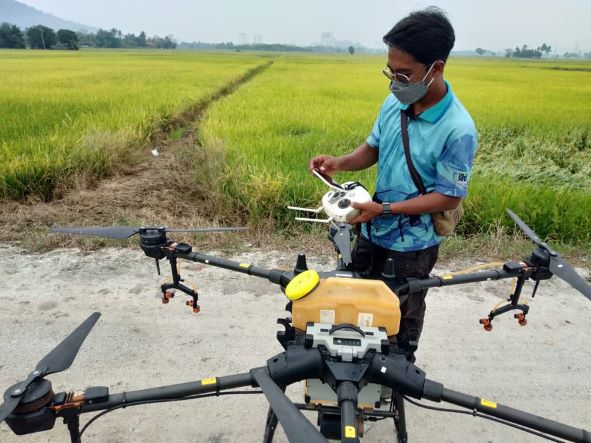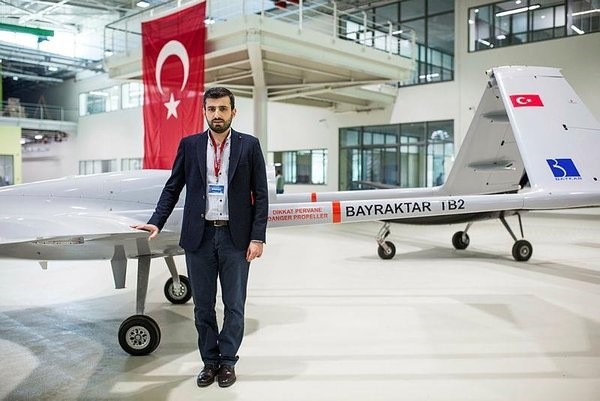Bayraktar TB2: The tank-killing drone on Malaysia’s shopping list

- 120Shares
- Facebook118
- WhatsApp2
Lately, we’ve been seeing more and more drones being used for various functions in Malaysia; they’re being used for photography, farming, and even for delivering flowers.
But of course, let’s not forget that drones, or ‘unmanned aerial vehicles’ (UAV), were first created for warfare. And Malaysia has invested quite a bit towards the military application of drones as well, both for Malaysia-made ones and foreign ones.
However, in recent times, one Turkish military drone in particular has stood head and shoulders above the rest in international media, and Malaysia wants it for its arsenal:
“Many Asian countries, especially Malaysia and Indonesia, show great interest in our defense industry products. Agreements are being signed.” – Mevlüt Çavuşoğlu, Foreign Minister of Türkiye
But is it really worth the money? For that, let’s take a look at what it’s done…
It has given Ukraine a major defensive edge in the Russia-Ukraine conflict
When Russia began their invasion of Ukraine in February 2022, Russian President Vladimir Putin predicted that Kyiv, Ukraine’s capital, would be captured in 2 days. Fast forward to September, and Russia is still struggling to gain ground in Ukraine.
And if the news reports are anything to go by, a large part of it is thanks to the Baykar Bayraktar TB-2 drone.
Beginning development in 2007, the Bayraktar (Turkish for ‘flag-bearer’) was first deployed by the Turkish military to counter Kurdish insurgents in Iraq and Syria. Before long, Ukraine started ordering some in 2019, and they’ve since become a mainstay of Ukrainian air power.
The Bayraktar has become a heroic symbol of the local resistance for its exploits against the Russian army. Having destroyed or severely damaged $28.35 million worth of Russian equipment as of September 2022, it’s now a darling of the Ukrainian peoples, who’ve named their pets after it, named their children after it, and even written a catchy folk song about it:
It’s even gone viral on TikTok and Twitter; just check out this bird’s-eye view of the Bayraktar laying waste to a Russian convoy:
#Ukraine: We present some exclusive recent footage from the eyes of the Bayraktar TB2 drone in the hands of the Ukrainian military.
A 9K317 Buk-M2 TELAR, part of the infamous convoy, completely destroyed. pic.twitter.com/PUiWkeOPwm
— 🇺🇦 Ukraine Weapons Tracker (@UAWeapons) March 7, 2022
Now at this point, you might go ‘wow, this drone must be really something special, no wonder Malaysia wants it!’ Yet with all that’s been said about the Bayraktar in the press, military analysts are painting a completely different picture. Basically, what they’re saying is that…
The Bayraktar’s success in Ukraine is largely down to Russian incompetence
Ok, time for a little dose of reality.
The Bayraktar has no self-defense systems, and flies at a speed of 127.8 km per hour. Yes, this thing is pretty slow for a combat drone (for comparison, the American MQ-9 Reaper cruises at 280-310 km per hour), which means that it’s a sitting duck for Russia’s sophisticated anti-air weaponry. Yet it’s somehow still performed, making mincemeat of Russian tanks and vehicles time and time again.
The reason? According to analysts, it’s that those Russians just can’t seem to get their act together:
“Even with the drones’ record of success, everyone expected that, once they (the Bayraktars) really faced the full gamut of Russian defenses, they would stand no chance. (Their survival and continued use) is really raising questions on the Russians’ capabilities.” – Lauren Kahn, drone warfare expert at the Council on Foreign Relations
Experts really are perplexed at how mighty Russia is failing so hard in Ukraine, but a big factor as to why the Russians can’t seem to unleash their ‘full gamut’ might be their lack of organization; it’s not that the Russians don’t have the tools to down the Bayraktars, but…
“Not everything they’re doing on the ground is fully being supported by what they’re doing in the air. There does seem to be some disconnect there.” – John F. Kirby, chief Pentagon spokesman
So yeah, there really isn’t much special about the Bayraktars after all, which of course begs the question: has Malaysia fallen for a marketing scam? Well, not quite either.
The Bayraktars still get the job done, and are relatively cheap
Ah. That makes much more sense.
Think of the Bayraktar as a Toyota Corolla, rather than a Ferrari; as its Turkish designer says, it’s “not too small, but it’s not too big; it’s not too cheap, but it’s not too expensive”. To put it simply:
“Tactically, it’s right in the sweet spot.” – Selçuk Bayraktar, CEO of Baykar and designer of the Bayraktar
(Fun fact: Pro-Ukraine Bayraktar is also the son-in-law of Turkish President Recep Tayyip Erdoğan, who is pro-Russia. Much drama.)
With a price tag of $6-9 million (a Reaper drone would cost about six times that), it’s no wonder Malaysia, and quite a few other countries (including Indonesia) are frothing at the mouth to get their hands on these babies. On top of all that, there’s even a three-year waiting list.
In any case, it probably isn’t a terrible time for Malaysia to be investing in combat drones, considering that the whole world is leaning into the trend. In fact, this purchase will be the next step towards Malaysia’s goal of becoming Southeast Asia’s testing ground for drones, so expect big things for our flyboys in the years to come.
- 120Shares
- Facebook118
- WhatsApp2










